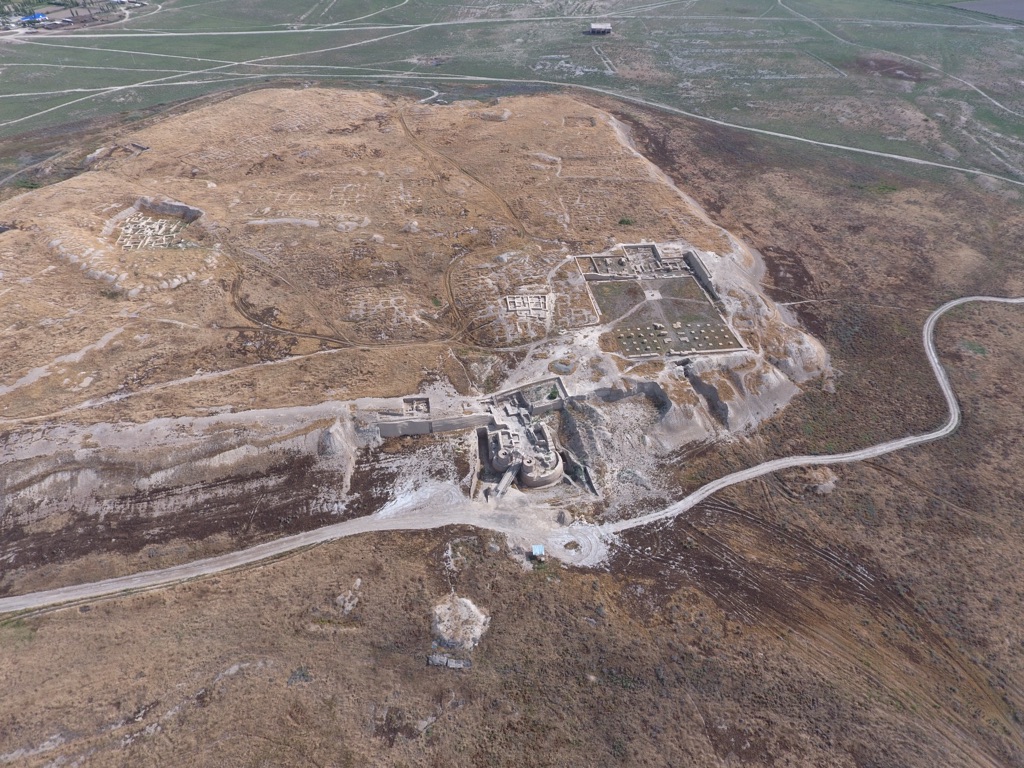Otrar, also known as Utrar or Farab, is a historical city located in present-day Kazakhstan. It thrived as a trading center on the Silk Road and played a significant role in regional politics, culture, and economics. Otrar’s strategic location made it a key hub for merchants and travelers between the East and West. The city witnessed many historical events, including the infamous siege by Genghis Khan’s army, which led to its decline. Today, Otrar’s ruins offer a glimpse into its past glory and significance in Central Asian history.
Get your dose of History via Email
Historical Background of Otrar
Otrar’s discovery traces back to archaeological excavations in the 20th century. Researchers unearthed the city’s remnants, revealing its historical importance. The city’s origins are ancient, with evidence suggesting it was a thriving settlement centuries before the Common Era. Otrar’s strategic position on the Silk Road contributed to its prosperity and cultural exchange.
The city was built by the local people of the region, whose skills in craftsmanship and trade were well-known. Over time, Otrar became a melting pot of different cultures and traditions. It was inhabited by various dynasties and empires, each leaving their mark on the city’s architecture and culture.
Otrar is perhaps most famous for its resistance against Genghis Khan in the early 13th century. The siege and subsequent destruction of Otrar marked a turning point in Central Asian history. The city’s fall signaled the beginning of Mongol dominance in the region.
After the Mongol invasion, Otrar experienced periods of decline and resurgence. It remained an important city for several centuries, even under Mongol rule. However, the city eventually lost its significance and was abandoned, leaving behind ruins that tell the story of its past.
The historical importance of Otrar is not only in its role as a trade center but also as a site of significant events and cultural exchange. Its ruins serve as a testament to the city’s resilience and the various civilizations that once called it home.
About Otrar
Otrar’s ruins reveal a city built with impressive architectural techniques. The city was fortified with walls and towers, showcasing the importance of defense in its design. The use of fired bricks in construction was a hallmark of Otrar’s architecture, indicating the city’s advancement and wealth.
The city’s layout was typical of ancient Central Asian urban design, with a citadel, residential quarters, and public buildings. Otrar’s irrigation system was a marvel of engineering, supporting agriculture and sustaining the city’s population.
Archaeological findings include religious structures, such as mosques and mausoleums, highlighting Otrar’s role as a center of Islamic learning and spirituality. The city also had palaces and administrative buildings, reflecting its political significance.
Artifacts recovered from Otrar, such as ceramics, metalwork, and textiles, provide insight into the daily life and trade activities of its inhabitants. These objects also illustrate the cultural diversity and connections Otrar had with other regions.
The craftsmanship of Otrar’s builders and artisans is evident in the intricate decorative elements found throughout the city. Carvings, mosaics, and inscriptions in the ruins speak to the city’s artistic heritage and the skill of its craftsmen.
Theories and Interpretations
Several theories exist about Otrar’s role and significance in history. Some historians suggest that Otrar was more than a trade center; it was a hub of knowledge and scholarship. The city’s libraries and schools may have been among the region’s finest.
Mysteries surround Otrar, such as the exact causes of its decline. While the Mongol invasion played a role, some argue that internal strife or a shift in trade routes contributed to its downfall.
Interpretations of Otrar’s history often rely on matching archaeological findings with historical records. This process has helped to piece together the city’s timeline and the events that shaped its destiny.
Dating of Otrar’s ruins has been carried out using methods like radiocarbon dating and stratigraphy. These techniques have helped establish a more accurate chronology of the city’s occupation and development.
Theories about Otrar continue to evolve as new discoveries are made. Each finding adds to the understanding of this ancient city and its place in the broader history of Central Asia.
At a glance
Country: Kazakhstan
Civilization: Various Central Asian cultures
Age: Established centuries before the Common Era, with significant events occurring in the early 13th century AD
Conclusion and Sources
Reputable sources used in creating this article include:
- Wikipedia: https://en.wikipedia.org/wiki/Otrar

